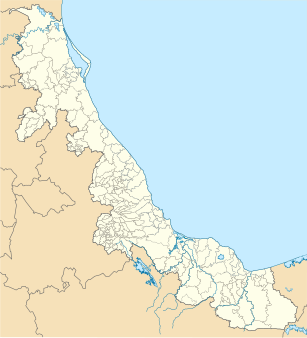
Agave vilmoriniana, sometimes misspelled vilmoriana, and popularly known as Octopus agave, is a species of agave endemic to Mexico. It is known for its untoothed arching and twisting leaves.

Atriplex confertifolia (shadscale) is a species of evergreen shrub in the Chenopodiaceae family, which is native to the western United States and northern Mexico.

Arbutus xalapensis, commonly known as the Texas madrone, naked Indian tree or Texas madroño, is a species of flowering plant in the heather family. It is native to Central America, the southwestern United States, and throughout Mexico. It is found in canyons and mountains, on rocky plains, and in oak woodlands, at altitudes of up to 3,000 m in the south of the range, but lower, down to 600 m in the north of the range.

Picramnia, the bitterbushes, is a genus of plant considered to be in the family Picramniaceae, but sometimes placed in Simaroubaceae. The name is conserved against the genera Pseudo-brasiliumAdans., and TaririAubl., both which have been rejected.
Quercus xalapensis, or xalapa oak, is a species of oak in the red oak group. It is native to Central America and to Mexico as far north as Hidalgo and Sinaloa.

Cyperus erythrorhizos is a species of sedge known by the common name redroot flatsedge. It is across much of North America from Maine, Ontario and British Columbia south to Tabasco in southern Mexico.

Lilium parryi, common name lemon lily, is a rare species of lily.

Menodora scabra is broom-like shrub in the Olive Family (Oleaceae), known by the common name rough menodora or broom twinberry. It is a popular desert garden plant.

Calibanus is a genus of two species of flowering plants, both evergreen succulents from dry areas of northeastern Mexico. The APG III classification system places it in the family Asparagaceae, subfamily Nolinoideae It was formerly included in the Agavaceae but is now separated from them, for it is polycarpic and dioecious. Its name refers to the monster Caliban, an antagonist in Shakespeare's The Tempest.

Agave polianthiflora is a relatively small member of the genus Agave, in the subfamily Agavoideae, endemic to northern Mexico.

Agave xylonacantha is a plant species native to Hidalgo, Tamaulipas, Guanajuato and Queretaro in Mexico, but commonly cultivated as an ornamental on other regions. A. xylonacantha is an easy-to-grow member of the genus Agave.

Agave striata is a plant species native to Northeastern Mexico.
Smilax moranensis is a plant species in the family Smilacaceae. It is native to mountainous areas in Mexico from Sonora and Chihuahua south to Chiapas.

Yucca potosina, English common name Potosí palm soapwort or Potosi palm, Rzed. is a plant species in the family Asparagaceae, native to the east central Mexico from Hidalgo to San Luís Potosí. It is sometimes cultivated as an ornamental, but not widely.
Prionosciadium watsonii is a plant species known from the Mexican states of Durango and Sinaloa.
Boerhavia gracillima, the slimstalk spiderling, is a plant species native to Arizona, New Mexico, Texas and Mexico. It prefers dry, rocky areas such as grasslands, desert scrub, roadsides and pinyon-juniper woodlands.
Atriplex valdesii is a plant species endemic to Mexico. It is known from the States of Zacatecas and San Luis Potosí. It grows is saline soils in desert areas and sometimes in disturbed habitats.
Dioscorea juxtlahuacensis is a plant species endemic to a small area in the State of Oaxaca in southern Mexico. It is known only from the Santiago Juztlahuaca District in the Sierra Madre del Sur, where it grows in deciduous oak-juniper forests at elevations of 1500–1700 m.
Trema micrantha, common name Jamaican nettletree or guacimilla, is a plant species native to warmer parts of the Western Hemisphere. It has been reported from Mexico, Guatemala, Costa Rica, Belize, Bolivia, Argentina, Nicaragua, Colombia, Ecuador, El Salvador, French Guiana, the Virgin Islands, Guyana, Honduras, Panamá, Venezuela, Suriname, Perú, Paraguay, Jamaica, Cuba, Hispaniola, Puerto Rico, and southern Florida. Within the State of Florida, it has been collected in 10 counties: Monroe, Miami-Dade, Lee, Broward, Palm Beach, Collier, Hendry, Martin, Sarasota and Pinellas.
Iresine heterophylla is a plant species native to the southwestern United States and also to Mexico. It has been collected from Arizona, New Mexico, Texas, Chihuahua, Sonora, Durango, Coahuila, Nuevo León, Campeche and Tabasco.














